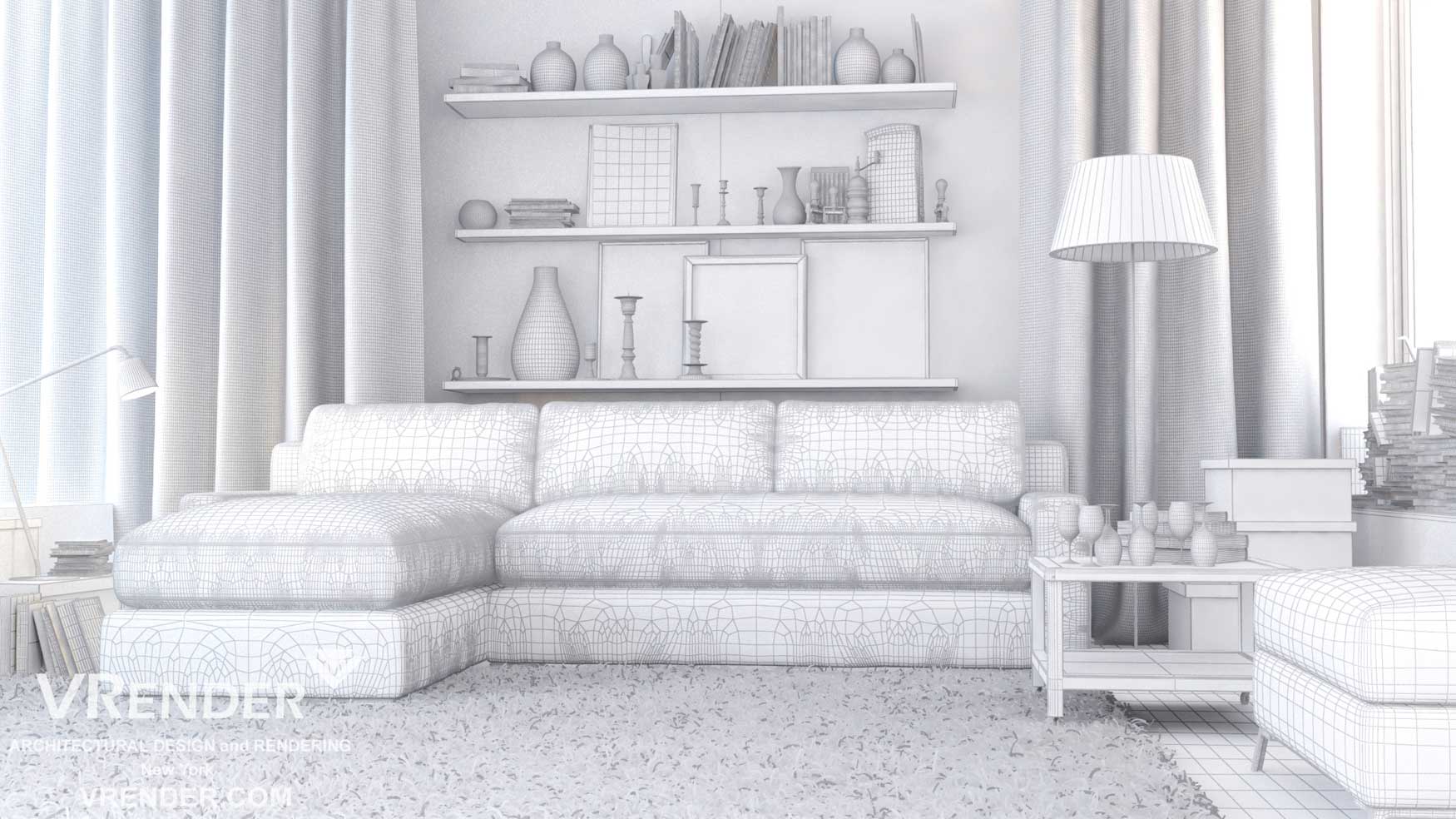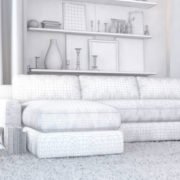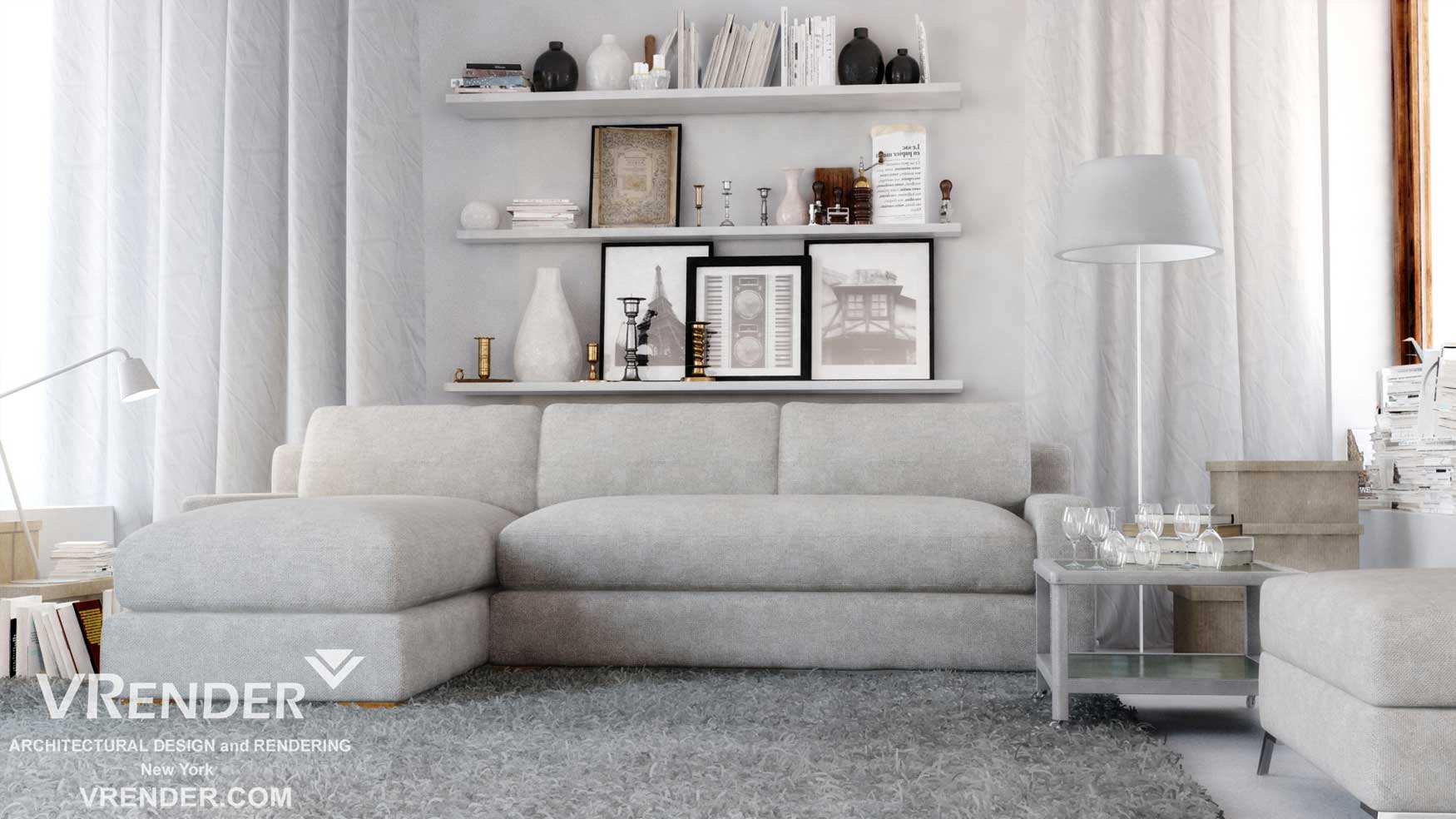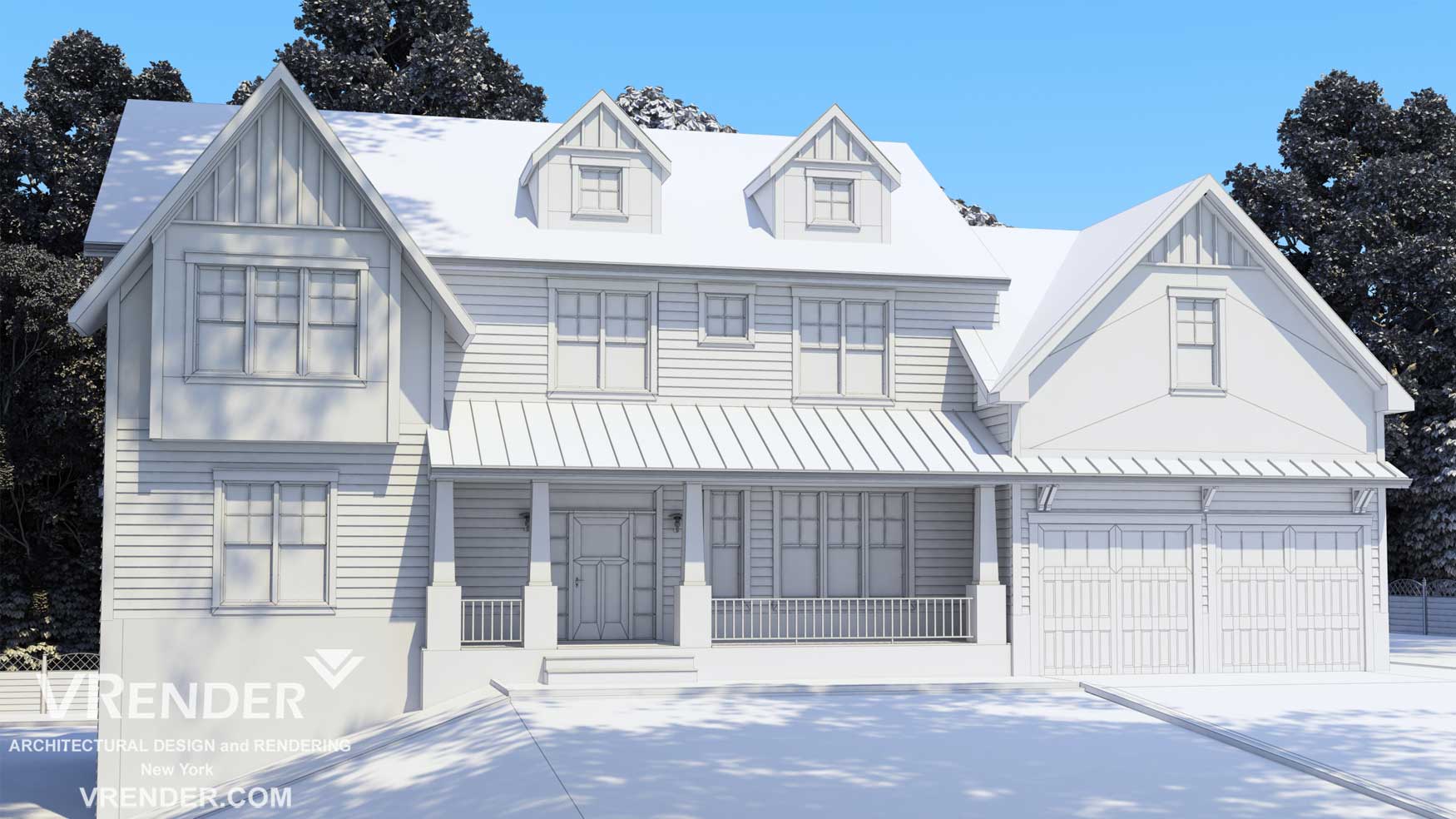The Process of 3D Visualization
When the task is set and a visualizer understands exactly what and where must be located, he or she can get to work. The accurate models of the premises and all objects that will be visible in the frame are created based on the plan in a 3D editor, for example, in 3D Max or AutoCAD. This is a huge job, but it is only a part of the entire process.
When the models are created, it is time to create materials for them – a visualizer creates and configures most realistic materials for each model. However, many models can have a lot of material, and they will all require careful development. But that’s not all.
No matter how carefully models and materials were designed, the whole scene would look very unnatural without realistic lighting. Therefore, the visualizer spends a lot of effort to install and configure the light sources. This may be the sunlight and/or artificial sources – lamps, candles… This requires careful control of the shadows.
Now comes the seemingly final part – receiving the ready image. In reality, what is obtained using 3D editor is not yet of the photo’s quality. So a visualizer works in Photoshop, adjusting the image to perfection by eliminating small defects and making the resulting color reproduction close to natural. Only after that, the resulting image is passed to you, the customer. This picture shows what is not yet present in reality, but it is a reality itself.
Did you think that 3D services are too expensive and the visualization of design may be done by anyone, who has ever seen Photoshop? Now you know that it is a lot of work, and a man, who does it, spends a lot of time and efforts. In spite of this, our studio offers fairly affordable prices for imaging, maintaining the high quality of work.
How is 3D visualization done?
Visualization gives an opportunity to look at what is only as a plan or idea. Of course, this gives much food for thought for a customer and a designer, because the photographic quality of image allows evaluating everything visually, rather than rely solely on your own imagination. To receive such a visual material, people refer to the visualizer, who turns plans into something that might be seen with eyes. But how it happens and what is required from you as from a potential customer?
3D visualization begins, of course, with the setting of the task. Visualizer cannot know what exactly you want to portray, so he/she needs some source materials. For example, if it is a visualization of a design (interior of a room), a drawing or a plan of a room is necessary, with an indication of its size. It is also required to show the desired plan of arrangement of furniture and other objects in a room, and to provide at least a description of these items, but better – to provide their photos.
The similar things happen with visualization of exteriors, i.e. looks from the street. It also requires a plan showing the sizes of all buildings that must get into the frame. This ensures precise adherence to the proportions and, eventually, the most realism.
 What can 3D visualization of architecture do?
What can 3D visualization of architecture do?
It might be a very long and detailed story of how comfortable and beautiful your new house will be, but showing it is much better. What to do, if the object is not even in the first stage of construction, but as a project only? It’s pretty easy: you should use the architectural visualization service.
It is possible to create a three-dimensional model of the future building with its help when the building itself is still a big question. Three-dimensional image may be shown to customers and investors. This will allow clearly presenting a project: to avoid unnecessary problems and change anything at the first stage.
Where to use the three-dimensional design
The three-dimensional design is used as a sales tool. It is difficult to attract new customers, showing them drawings of the future cottage. Photos of the building with bare walls aren’t too impressive also. The best way is to furnish an existing or a constructing object. Try to create a dream apartment, amaze the customer and he or she will be yours.
Vrender Company 2017.
- How to add perspective to architectural projects with digital 3D rendering help - December 24, 2023
- 3D Architectural Walkthrough Animation Services New York - April 24, 2019
- 3D Rendering Services in San Francisco, California - March 12, 2019








